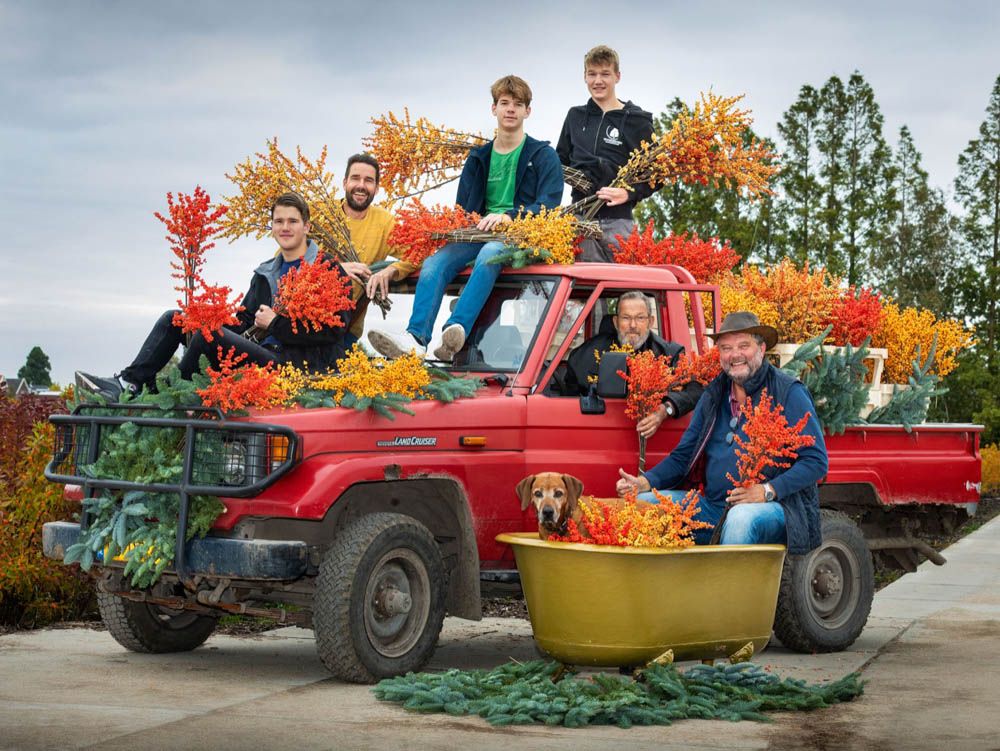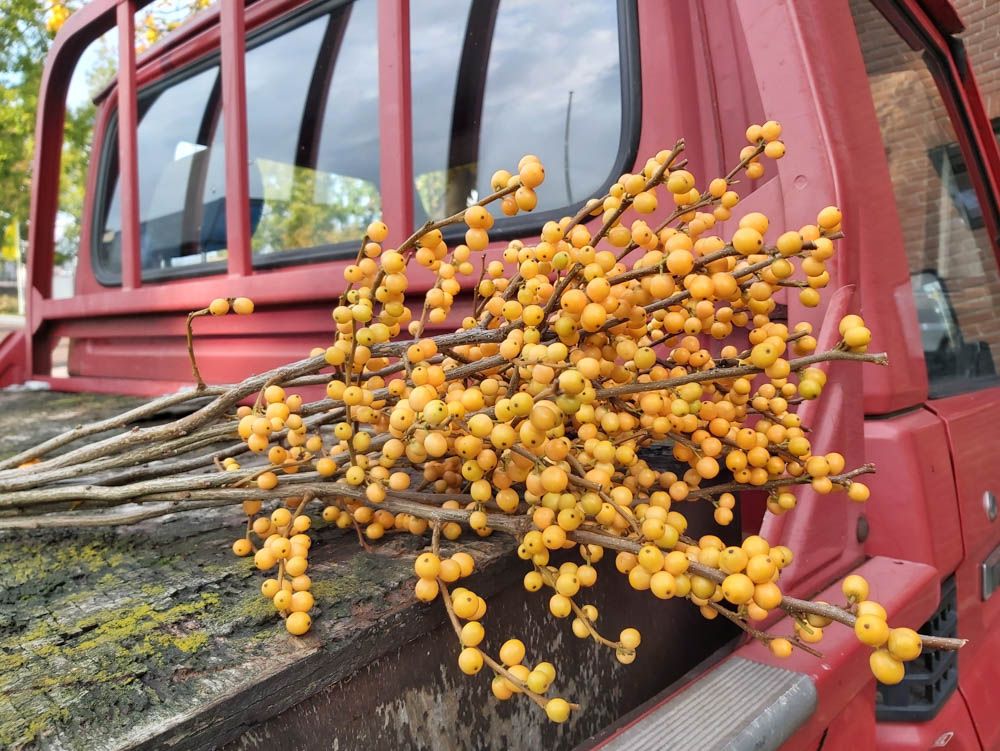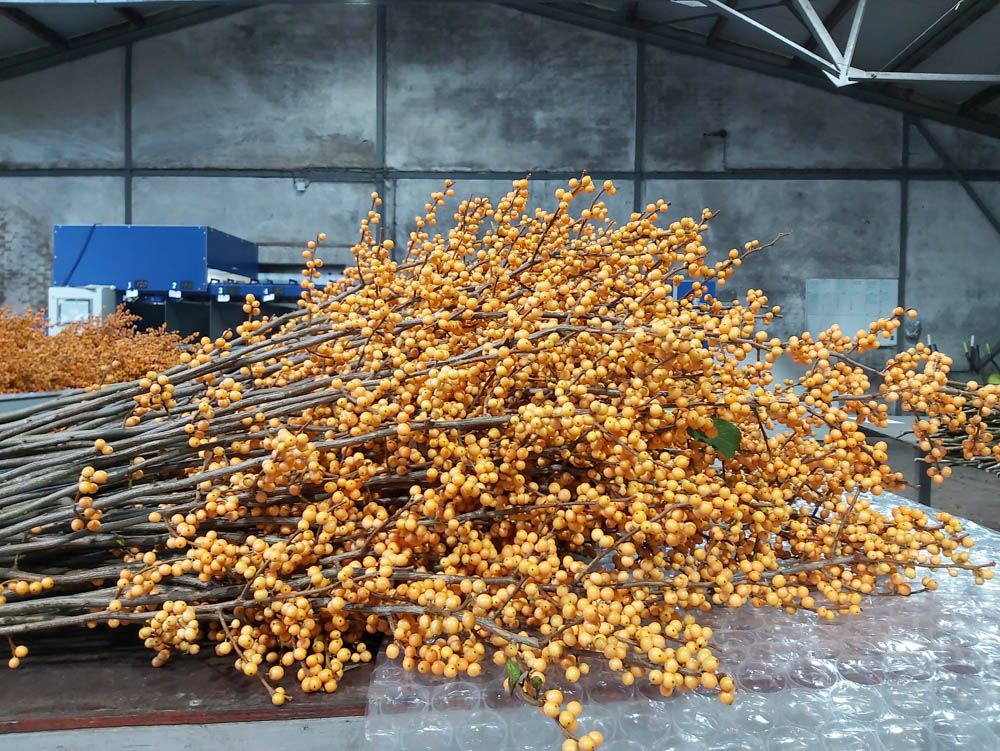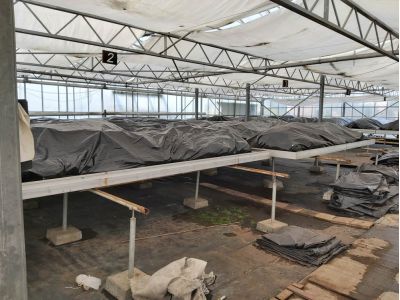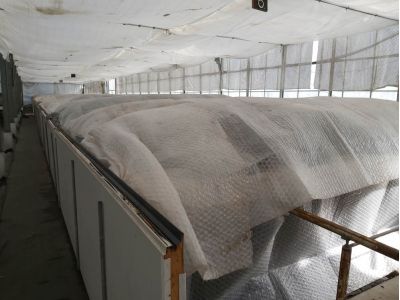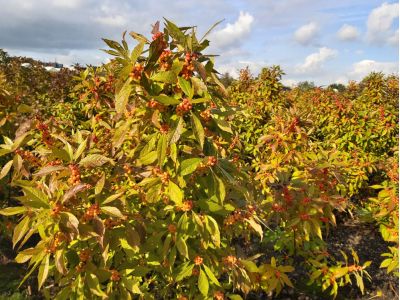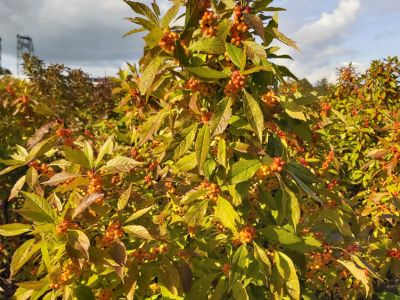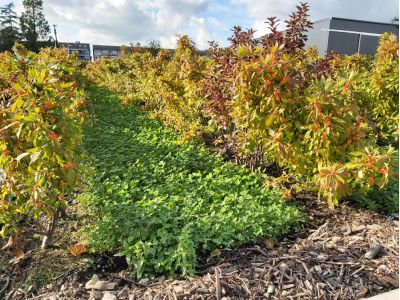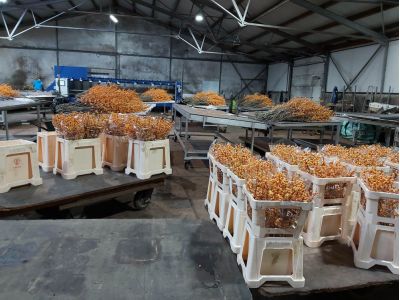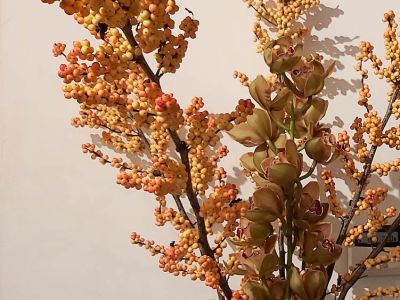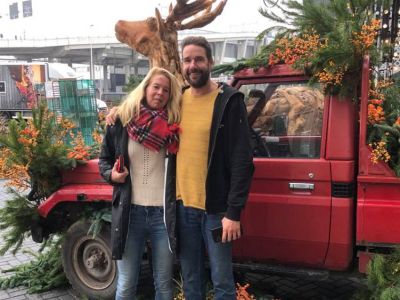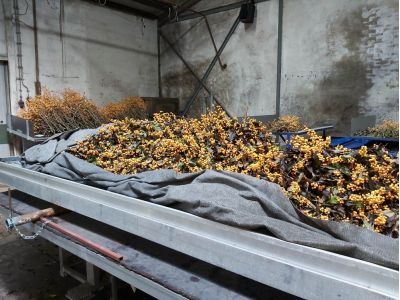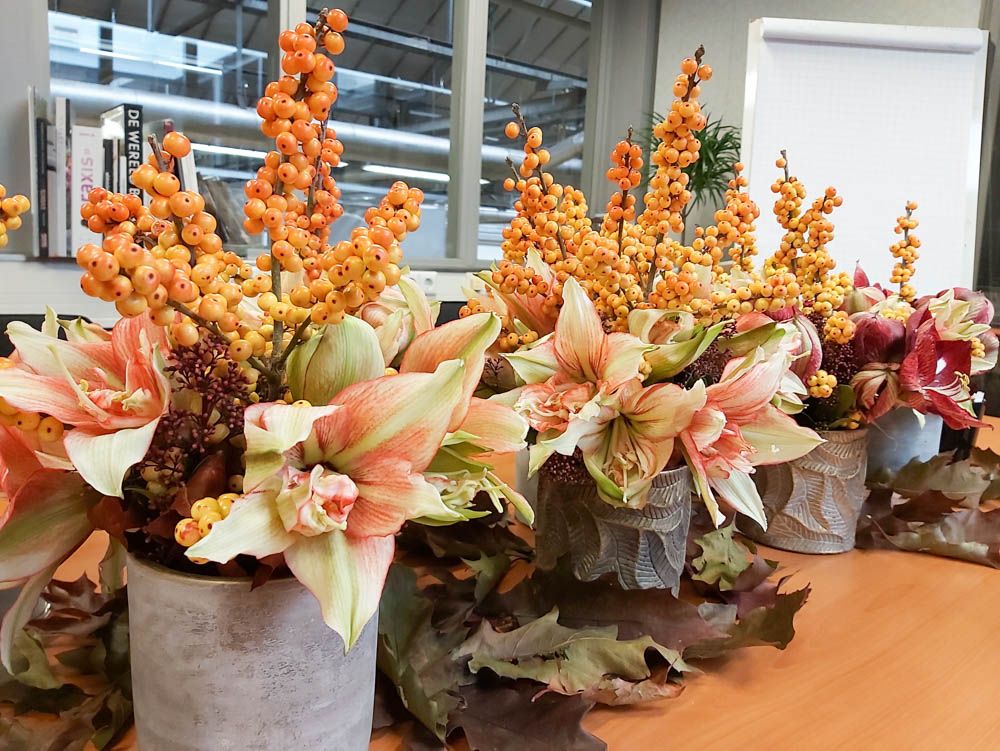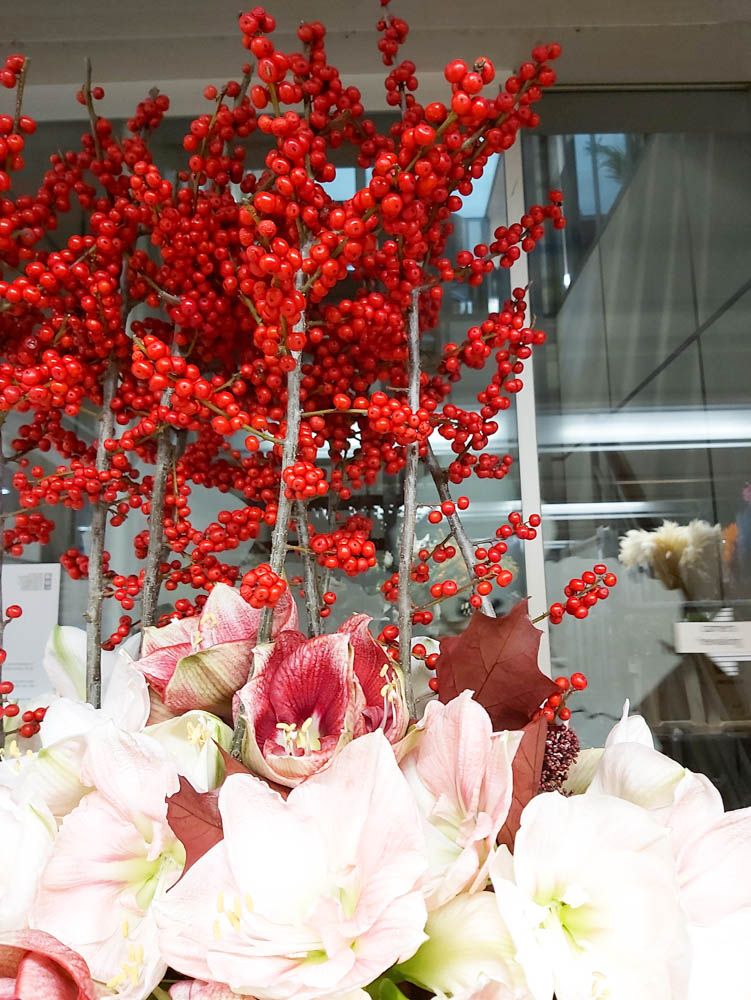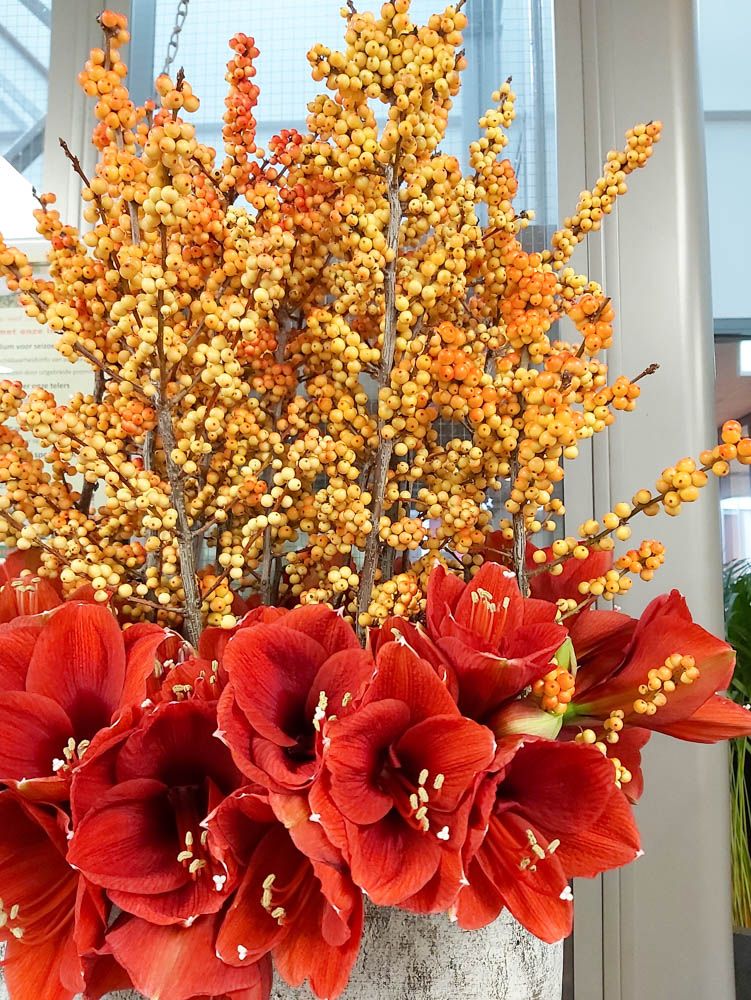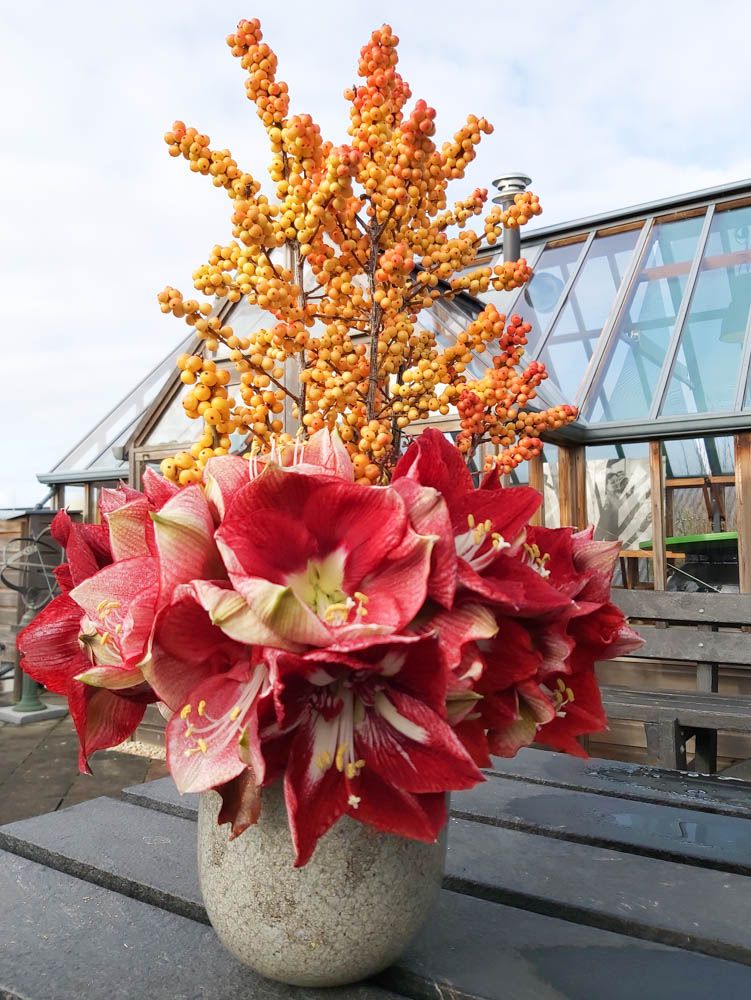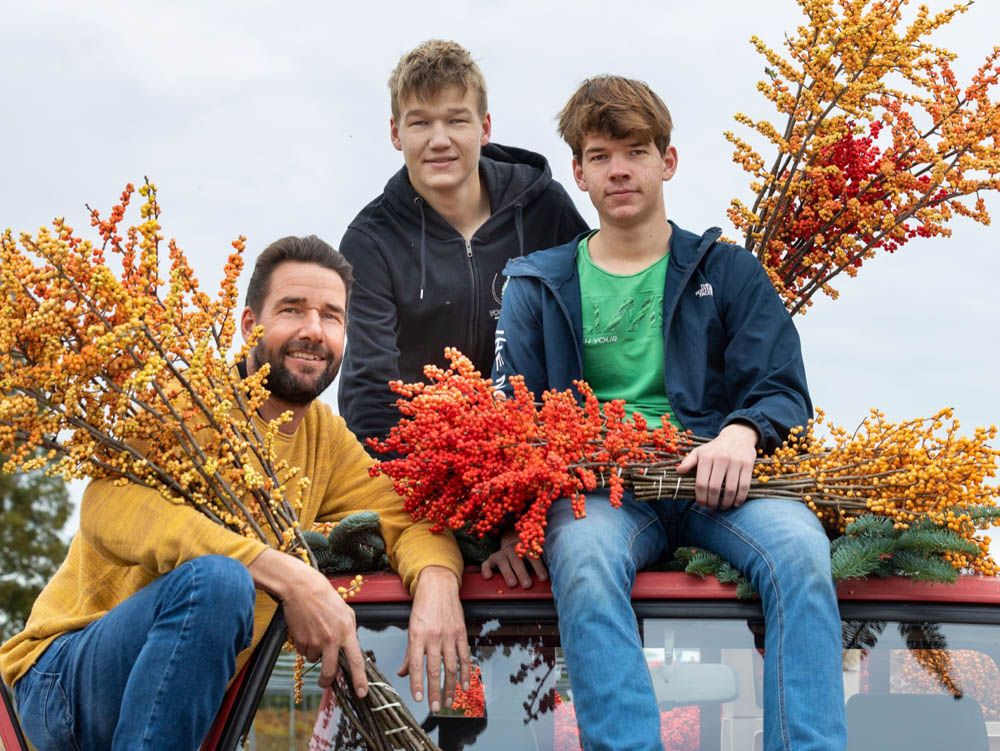Grower Emiel de Jong
Ilex
In recent years we have visited many different growers with the FloraPodium. Some visits have left such an impression that we are still talking about them years later. The visit to Ilex grower Emiel de Jong is one of them. The beautiful image of the different species of Ilex verticillata in the barn on the table against the gray back wall has left a huge impression on our retinas!
Emiel de Jong is known for his versatile assortment consisting of many colors of Ilex. On 14 hectares he grows seven varieties of Ilex verticillata every season. Because of the wide variety of Ilex colors, the Ilex's Christmas image is slowly disappearing and Ilex is becoming an increasingly appreciated autumnal item. Three years after our first visit, we are again welcomed by Emiel. It is the start of a new season and full of enthusiasm Emiel showed us around on his field.
Labor intensive cultivation
Ilex grows well on an acidic soil like peat or sand, which makes a large part of The Netherlands unsuitable for its cultivation. The Ilex cultivation is also a labor intensive cultivation, which does not make it a popular choice for growers. The Ilex produces berries every other year, so every branch that is harvested must earn its keep for two years. Some growers now leave their branches standing for an extra year, making the branch even more capricious, because that is completely in line with the current flower trend.
During the first year, an adult plant focuses on growth. The shrub produces branches that produce berries the following year. In the "berry year", the bushes receive a special treatment in January / February. With a spade (some growers do this by machine), the roots that grow outside the root ball are cut off. As a result, the side branches of the shrubs stay shorter and the flowers grow much closer together, creating beautiful compact branches with a lot of berries. The cut root ball extracts much less water from the soil, which means the grower should irrigate significantly more. Plenty of water also ensures beautiful full berries.
Male and female plants
The Ilex crop is dioecious: the plants can be male or female. It is important that a grower has got five to ten percent of male plants scattered around his field. Without male plants, pollination cannot take place and the female plants do not produce berries. It is important that the male and female plants flower at the same time. The flowering time can differ per crop type. The bees provide the largest part of pollination. Most Ilex growers therefore ensure that there are a certain number of beehives next to the crop during the flowering period.
Leaf scalding
Ilex is sold with no leaves on the branches. After all, the ornamental value lies with the berry. The moisture evaporates quickly from the leaf, after which the leaf draws moisture from the berry. This is at the expense of the shelf life of the product. The leaves are removed by scalding. The branches are placed on tables covered with black plastic and bubble wrap, creating a very warm and humid environment. After ten days the leaves fall off and the product can be processed.
Looking to the future
Emiel is the third generation in the company. Just like many other growers it is a real family business. Not only does his father still work in the shed every day, but Emiel's sons also work hard. Emiel has got a beautiful company with an old traditional culture, and has his mind set on the future.
FloraPodium, 11 november 2021






